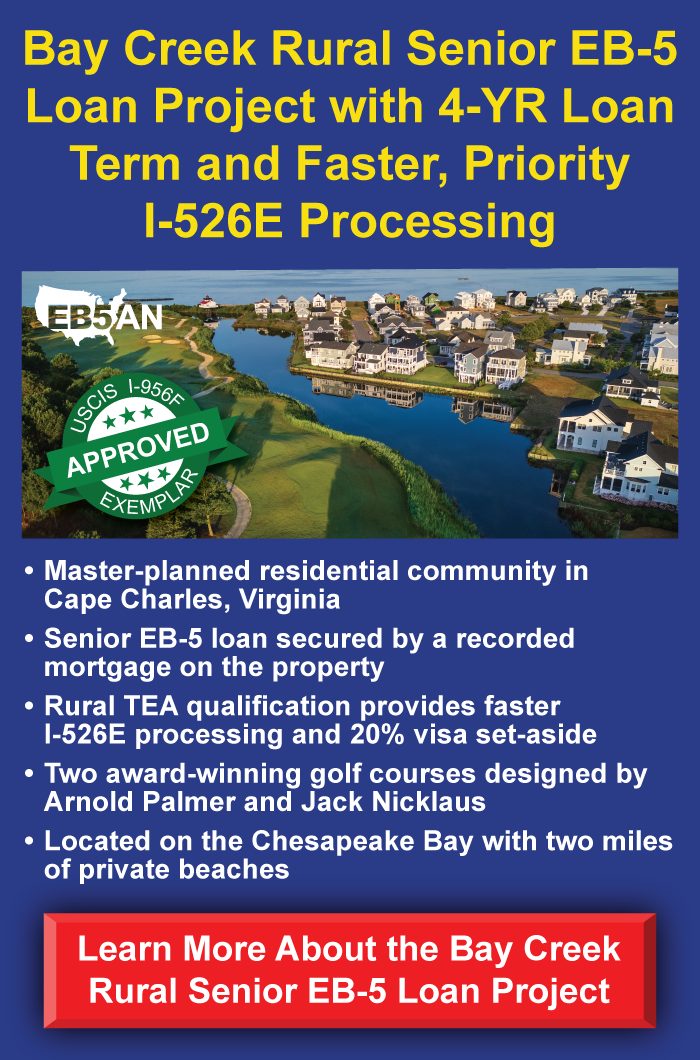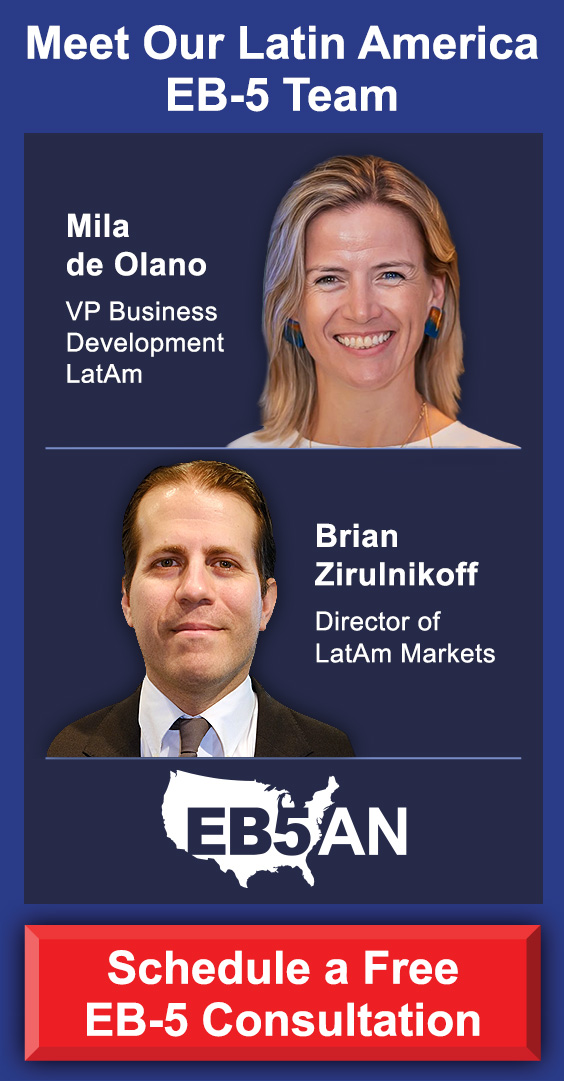The EB-5 Immigrant Investor Program, established by the U.S. Congress in 1990, is a popular investment-based route to permanent residency in the United States. The program is designed to promote economic growth by attracting foreign capital while providing investors an opportunity to secure Green Cards for themselves and their family members.
However, a common misconception about the EB-5 visa is that it is equivalent to a “golden visa,” which involves paying a substantial amount of money in exchange for permanent residency. In reality, the EB-5 program is far more complex—and rewarding—than a simple transaction, offering investors both permanent residency benefits and financial returns.
The EB-5 program requires participants to make a qualifying investment in a new commercial enterprise (NCE) that creates requisite jobs and stimulates regional development. By carefully selecting low-risk, high-quality projects, investors can successfully obtain Green Cards as well as recover their investment, potentially with profits. It is this combination of immigration benefits and capital gains that sets the EB-5 visa apart as a unique permanent residency pathway.
In this article, we will explore the fundamental EB-5 investment criteria, how EB-5 funds are structured and repaid, and the key factors investors must understand to mitigate their immigration and financial risks.
EB-5 Investment Requirements
EB-5 Investment Structure and Repayment
How Investors Can Safeguard Their Investment
Invest Confidently With EB5AN
EB-5 Investment Requirements
The EB-5 program is administered by United States Citizenship and Immigration Services (USCIS), which has specific criteria for an investment to qualify under the program. Here are the key requirements for an EB-5 investment:
- Participants must invest a minimum of $800,000 for projects located in rural or high-unemployment targeted employment areas (TEAs). If the investment is made in a non-TEA project, the minimum EB-5 capital requirement is $1,050,000.
- The investment must create at least 10 full-time jobs for U.S. workers.
- The investor must prove with detailed documentation that the invested funds were sourced legally.
- The invested capital must remain deployed “at risk” for at least two years, meaning the investor’s funds must be invested in an EB-5 project and exposed to the possibility of gain or loss without any guaranteed returns.
Thus, by the very definition, EB-5 investments carry inherent risks, and there is a possibility that investors can lose their invested capital. However, investors can significantly reduce their financial risk by understanding how EB-5 repayment works and making informed decisions.
EB-5 Investment Structure and Repayment
A majority of EB-5 investments are made through government-approved regional centers that pool funds from multiple investors to invest in large-scale development projects.
Regional center investments have multiple benefits for investors, especially in meeting the EB-5 job creation criteria successfully. This is because regional center investments have the advantage of including indirect and induced jobs generated by the larger economic impact of the project, in addition to the direct positions created by the investment.
Regional center investments can be structured as loans or equity, with each model offering certain benefits and risks. The important difference between the two is that the loan model has a well-defined repayment term but low annual return rates, whereas an equity structure offers higher returns but often has a riskier exit strategy.
Loan-Based Investment
In the loan model, the EB-5 investor’s funds are loaned to a borrower, which may be the project itself or a separate company that invests EB-5 funds into the project. Loaned EB-5 investments have a fixed repayment deadline called the maturity date, typically having an approximately five-year duration.
Another advantage of this structure is that the loan can be secured by a mortgage or a third-party repayment guaranty. High-quality loan offerings are usually secured with enough collateral to cover the loaned capital, giving investors greater financial security.
Equity-Based Investment
For investments structured as equity, the investor funds are used to purchase interests either directly in the project or in a company that owns interests in the project. Equity investments do not have a fixed repayment date and are recovered as profits after the sale or refinancing of the project.
Depending on the project’s performance, equity investments may yield higher returns than those offered by the loan structure, but the risk is also greater. If the project runs into trouble, repayment of equity investments may be delayed.
Most EB-5 investments are structured as loans with a predictable repayment schedule. However, the recovery of EB-5 funds largely depends on the project’s ability to generate revenue. Whether they choose a loan-based or equity-based investment, the project’s success is critical for investors to get a timely recovery of their capital.
Therefore, investors must be selective and carefully assess the economic viability of the project before committing to an investment.
Choosing a reliable and financially stable project developer with a history of successful EB-5 projects is equally important when considering an EB-5 investment.
How Investors Can Safeguard Their Investment
Regional centers play a crucial role in the EB-5 program, acting as intermediaries between investors and projects. Partnering with an established regional center with a proven track record is a prerequisite for minimizing risks in an EB-5 investment.
Investors must look out for the following protection measures while evaluating a regional center offering:
- Investors must ensure that the offering includes a clear and credible exit strategy in the project’s business plan that outlines when and how investors will get their funds back.
- Offering documents must also include an intercreditor agreement, defining investors’ rights should the project fail.
- Investors must look out for projects with a repayment guaranty from a reputable, well-capitalized guarantor who has no conflicts of interest with the borrower or project developer.
- The offering documents should include an escrow agreement defining the terms of the release of funds to the developer.
- The offering should preferably have an I-526E denial refund guaranty to ensure that the investor’s funds are returned if their petition is denied.
- Investors must select a project that has sufficient and diversified funding and does not heavily depend on EB-5 capital for its execution. The project developer must be willing to share the senior loan agreement and other financial documents to demonstrate the financial robustness of the project.
- A profitable project that is already generating revenue before completion is more likely to repay investors than one dependent on projected gains.
- If a project is in the advanced stages of construction at the time of investment and is on track to create surplus jobs, it can be considered low-risk for EB-5 investment.
Invest Confidently With EB5AN
The EB-5 program is not just a transactional path to a Green Card; it is also an opportunity to participate in the U.S. economy and get financial returns. To get all of their investment back, potential investors must understand the repayment process and recognize the red flags in an offering.
By careful project selection, collaborating with reputable regional centers, and consulting with experts, a well-planned EB-5 investment can pave the way for both personal and economic success.
EB5AN, a leading EB-5 firm, specializes in guiding investors through the EB-5 process and providing them with safe and transparent investment opportunities. We have helped more than 2,700 families from 70+ countries become permanent residents of the United States. Our expert team has over a decade of experience, and we offer our clients first-rate, low-risk EB-5 regional center projects with a 100% USCIS project approval rate to date.
If you’d like to know more about the EB-5 repayment process, feel free to book a one-on-one call with our team today.










